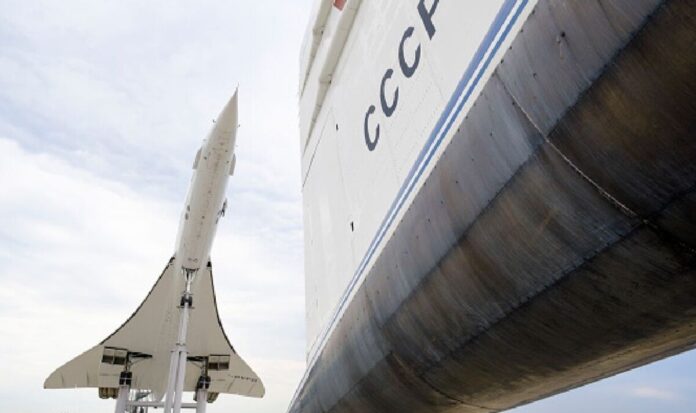Russia’s ally Belarus is allowing Vladimir Putin to expand his ballistic radar by positioning nuclear missiles on its territory. The UK Ministry of Defence (MoD) detected a Russian jet capable of carrying the infamous “Killjoy” nuclear missile in Belarus on Tuesday.The nuclear weapon has a range of over 2,000km (1,200 miles). If positioned with the Russian jets on Belarusian territory, it could easily reach the UK.In an update on Tuesday, the MoD said: “Imagery showed two MiG-31K FOXHOUND interceptor jets were almost certainly parked at Belarus’s Machulishchi Airfield on 17 October, with a large canister stored nearby within a protective earth berm.”It is likely that the canister is associated with the AS-24 KILLJOY air-launched ballistic missile, a large munition which the MiG-31K variant is adapted to carry.”Russia has fielded KILLJOY since 2018, but it has not previously been deployed in Belarus. Russia has occasionally launched these weapons during the Ukraine war, but stocks are likely very limited.”It continues to expand its advanced long-range munitions against targets of limited operational importance.”With a range of over 2000km, basing Killjoy in Belarus gives Russia little added advantage in terms of striking additional targets within Ukraine. UK MoD says Russia moved a jet to Belarus (Image: MoD) The Russian jet can carry nuclear missiles KILLJOY (Image: GETTY)”It has likely carried out the deployment mainly to message to the West and to portray Belarus as increasingly complicit in the war.”The jet has now been positioned just 1100 miles from London sparking fears it could be used to attack the West.It comes as Russia reinforced its fighting force Tuesday with an annual fall draft of 120,000 men, and doubled the number of civilians it’s trying to evacuate in anticipation of a major Ukrainian push to recapture the strategically vital southern port city of Kherson.Russian military officials have assured that conscripts to be called up over the next two months will not be sent to fight in Ukraine, including to the Kherson region, three other Ukrainian areas that Russia recently illegally annexed or to Crimea, which the Kremlin made part of Russia in 2014.However, the US-based Institute for the Study of War said the Russian Defense Ministry ‘is attempting to deceive the Russian population into believing that autumn conscripts will not be sent to fight in Ukraine, likely to prevent draft dodging.’This year’s fall draft was delayed because of an extraordinary partial mobilization of 300,000 reservists that President Vladimir Putin ordered on September 21 specifically to bolster his Ukraine invasion force. While Russian officials have declared the partial mobilization complete, critics have warned it could resume after military enlistment offices are freed up from processing fall conscripts.READ MORE: ‘Imminent’ Iranian attack on Saudi Arabia puts kingdom on high alertRussian Defense Minister Sergei Shoigu said Tuesday that 87,000 of 300,000 reservists have been deployed for combat in Ukraine and that 3,000 military instructors with fighting experience in the country are training them.Reports suggest that many of the mobilized reservists are inexperienced, were told to procure basic items such as medical kits and flak jackets themselves, and did not receive proper training before deployment. Some were killed within days. After Putin’s order, tens of thousands of men fled Russia to avoid serving in the military.Some of the fresh troops have reportedly been sent to Kherson, on the 1,100-km (684-mile) front line. Russian-installed authorities in Kherson, fearing a major Ukrainian counterattack, on Tuesday reported relocating 70,000 residents, and they expanded an evacuation area to people living within 15km (9 miles) of the Dnieper River.The region’s Kremlin-appointed governor, Vladimir Saldo, said the relocation of an additional 70,000 residents from the expanded evacuation zone would be completed this week and claimed it was ordered because Kyiv ‘is preparing a massive missile strike on the Kakhovka hydroelectric station” to flood Kherson.Ukraine’s military on Tuesday described the new evacuations as ‘forced displacement,’ and the Russian-installed government of the Kherson regional district where the Kakhovka hydroelectric station and associated dam and reservoir are located announced it would undertake a ‘forced evacuation’ on Sunday. The Ukrainian military said the Kherson regional administration had been relocated to Skadovsk, 100kms (62 miles) south of the city of Kherson.DON’T MISS:China’s military build-up exposed as snaps capture extent of power [VIDEO]Finland calls on Turkey and Hungary to approve NATO application [INSIGHT]Should Suella Braverman resign as Home Secretary? [POLL]In addition to the Kremlin’s military draft, it moved on another front to bolster its forces. Authorities in Belarus on Tuesday approved the creation of two joint troop training centers with Moscow on the territory of the east European country, which borders Ukraine. Russia has previously used Belarus, its long-standing and economically dependent ally, as a springboard to send troops and missiles into Ukraine. Kyiv fears the Belarusian army could be drawn directly into the war.Elsewhere, concerns about radiation figured in two developments. Experts from the United Nations’ nuclear watchdog agency inspected two Ukrainian sites that Russia identified as involved in its unfounded claims that Ukrainian authorities planned to set off radioactive ‘dirty bombs’ in their own invaded country. International Atomic Energy Agency Director General Rafael Grossi said the inspections for evidence of ‘dirty bombs’ would be completed soon.Russia’s UN ambassador, Vassily Nebenzia, claimed in a letter to the UN Security Council members last week that Ukraine’s nuclear research facility and mining company ‘received direct orders from (President Volodymyr) Zelensky’s regime to develop such a dirty bomb.’Western nations have called Moscow’s repeated claim ‘transparently false.’ Ukrainian authorities dismissed it as an attempt to distract attention from alleged Russian plans to detonate a dirty bomb as a way to justify an escalation of hostilities.A second radiation concern involves fighting near Europe’s largest nuclear power plant. The IAEA has stationed monitors at the Russian-occupied Zaporizhzhia Nuclear Power Plant, where a radiation leak could have catastrophic consequences.
Russian jet capable of carrying KILLJOY missile 1100miles from UK
Sourceexpress.co.uk
RELATED ARTICLES


